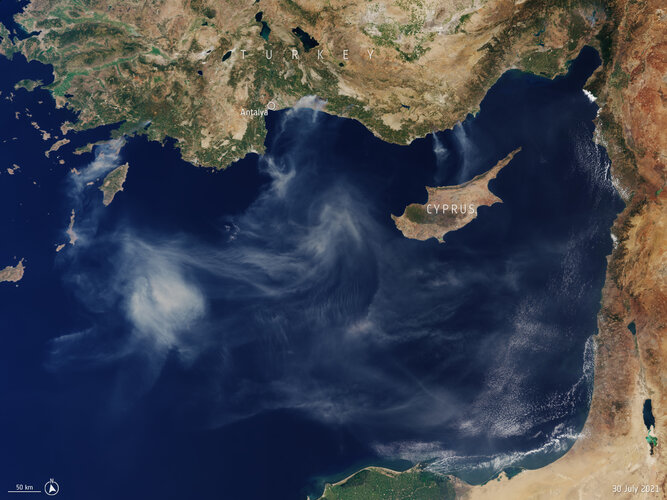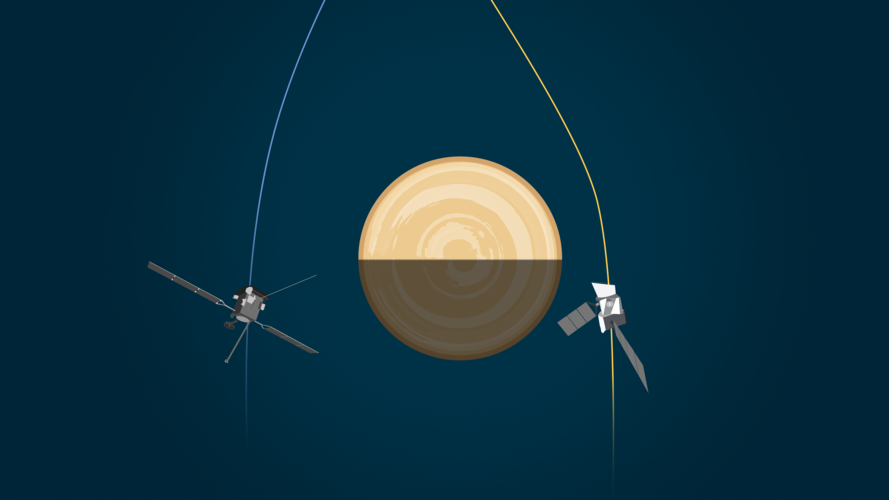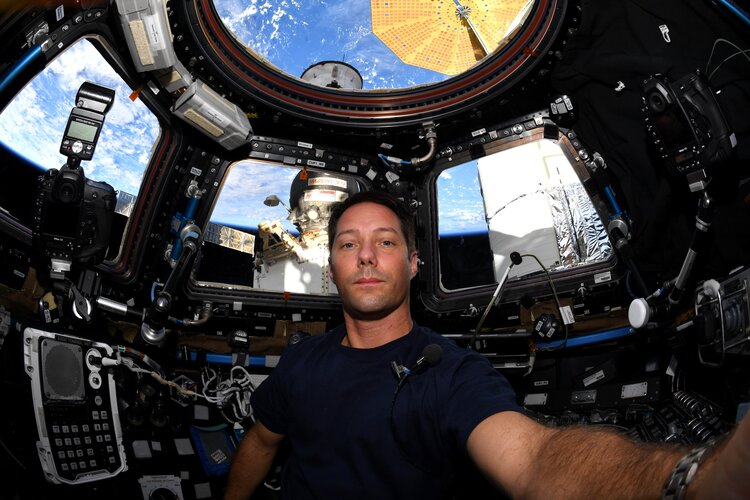
Copernical Team
Smoke billows from fires in Turkey
 Image:
Captured by the Copernicus Sentinel-3 mission on 30 July 2021, this image shows smoke billowing from several fires along the southern coast of Turkey.
Image:
Captured by the Copernicus Sentinel-3 mission on 30 July 2021, this image shows smoke billowing from several fires along the southern coast of Turkey. Science in motion for ExoMars twin rover

The first science tests for the ExoMars rover replica kicked off after several weeks of driving tests around the Mars Terrain Simulator at the ALTEC premises in Turin, Italy.
ESA gets ready for double Venus flyby

Solar Orbiter and BepiColombo are set to make space history with two Venus flybys just 33 hours apart on 9 and 10 August.
Accounting for Earth’s water cycle

The amount of water on Earth is finite. Sustaining life, this precious resource has been circulating between Earth’s surface and atmosphere for over four billion years, and changing between a liquid, a solid and a gas along the way. Although the total amount of water within the cycle remains constant, the way it is split between its various reservoirs changes continually. With the climate crisis leading to more extreme droughts and floods, the availability of enough freshwater where we need it is a growing concern. How can we be sure that we are using our water resources sustainably?
Kitchen robot in Riga cooks up new future for fast food
 A pasta order comes in and the robotic arm springs into action at the Roboeatz eatery in Riga. After five minutes of gyrations, a piping hot plate is ready.
The Riga cafe, located under a crumbling concrete bridge, is designed in such a way that customers can observe the robotic arm at work.
It also has a seating area, although most customers prefer take away since vaccination certificat
A pasta order comes in and the robotic arm springs into action at the Roboeatz eatery in Riga. After five minutes of gyrations, a piping hot plate is ready.
The Riga cafe, located under a crumbling concrete bridge, is designed in such a way that customers can observe the robotic arm at work.
It also has a seating area, although most customers prefer take away since vaccination certificat A hundred days of science for Thomas

“I am finding it magical every day, but there is also a lot of routine,” says ESA astronaut Thomas Pesquet reflecting on his first 100 days aboard the International Space Station during his second mission. In total, Thomas has logged 296 days in space.
Tracking the movement of a single nanoparticle
Let's face the liquid-liquid interface
 The demand for energy consumption, limited availability of fossil fuels, and pollution caused by the energy production industry challenge scientists to find new, more cost-effective, and greener solutions to produce power. Most of the current energy sources are far from being environmentally friendly. In this context, electrochemically assisted generation of chemicals, at first glance, would not
The demand for energy consumption, limited availability of fossil fuels, and pollution caused by the energy production industry challenge scientists to find new, more cost-effective, and greener solutions to produce power. Most of the current energy sources are far from being environmentally friendly. In this context, electrochemically assisted generation of chemicals, at first glance, would not Shoring up the Corn Belt's Soil Health With NASA Data
 After the corn harvest last fall, Illinois farmer Paul Jeschke planted a fraction of his fields with cereal rye: 60 acres of the 4,500 he farms with his wife, nephew and brother-in-law, tucked behind a pasture, out of neighbors' sight. That way they could experiment with cover crops, Jeschke explained, and no one could view potential failures.
In the coming months, the rye would sprout int
After the corn harvest last fall, Illinois farmer Paul Jeschke planted a fraction of his fields with cereal rye: 60 acres of the 4,500 he farms with his wife, nephew and brother-in-law, tucked behind a pasture, out of neighbors' sight. That way they could experiment with cover crops, Jeschke explained, and no one could view potential failures.
In the coming months, the rye would sprout int ECOSTRESS data incorporated into new wildfire response tool
 NASA's ECOsystem Spaceborne Thermal Radiometer Experiment on Space Station (ECOSTRESS) is aiding in the fight against fires in the Western U.S.
As of July 28, 2021, the size of the Bootleg Fire in southern Oregon was more than 410,000 acres, making it the largest wildfire currently burning in the U.S. So far, some 400 buildings and more than 340 vehicles have been destroyed. Wildfire respo
NASA's ECOsystem Spaceborne Thermal Radiometer Experiment on Space Station (ECOSTRESS) is aiding in the fight against fires in the Western U.S.
As of July 28, 2021, the size of the Bootleg Fire in southern Oregon was more than 410,000 acres, making it the largest wildfire currently burning in the U.S. So far, some 400 buildings and more than 340 vehicles have been destroyed. Wildfire respo 